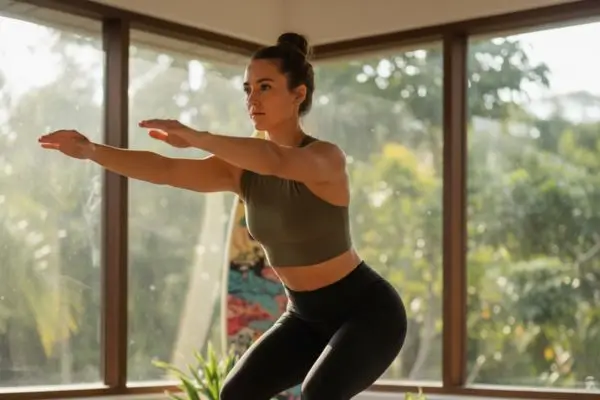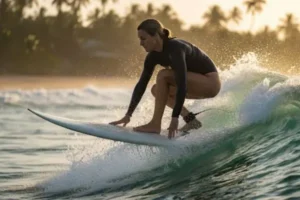Surfing is often described as a dance with the ocean, and balance is the foundation of that dance. For women beginners, building stability both on and off the board can make learning smoother and more enjoyable. While natural balance plays a role, the truth is that it can be trained and improved through consistent practice.
The Role of Balance in Surfing
Balance is more than simply standing on the board. It involves controlling weight distribution, reacting to the movement of the wave, and maintaining core stability. Without balance, paddling feels shaky, pop-ups become unstable, and even small waves seem overwhelming. With balance, every skill in surfing feels more attainable.
Strengthening the Core
The core is the powerhouse of balance. A strong core helps keep the body centered and responsive to shifts in the ocean.
- Plank Variations: Side planks and forearm planks build stability.
- Russian Twists: Train rotational strength for turning on the board.
- Balance Ball Exercises: Sitting or lying on a stability ball mimics the wobble of a surfboard.
Consistent core training gives women surfers a solid foundation to remain steady, even in unpredictable conditions.
Training Outside the Water
Balance doesn’t have to be learned only in the surf. Land-based exercises can dramatically improve performance.
- Yoga: Poses like Warrior II, Tree Pose, and Chair Pose enhance body awareness and stability.
- Skateboards or Balance Boards: Practicing stance and micro-adjustments on dry land develops reflexes.
- Single-Leg Stands: A simple yet effective drill to train weight distribution.
These activities simulate the shifting environment of the ocean and help beginners build confidence before paddling out.
Adapting to the Surfboard
Once in the water, board awareness becomes key.
- Find Your Stance: A shoulder-width stance with bent knees provides stability.
- Low Center of Gravity: Keeping the body slightly crouched helps absorb the movement of the wave.
- Soft Knees, Relaxed Upper Body: Tension makes balancing harder; relaxation allows quicker adjustments.
Beginners often improve significantly by simply practicing standing on their board in shallow whitewater before attempting longer rides.
Common Challenges and Solutions
- Feet Too Close Together: This reduces stability. Solution: widen stance slightly for a stronger base.
- Rigid Movements: Staying stiff causes falls. Solution: practice flowing transitions instead of sharp reactions.
- Overthinking: Focusing too much on perfect form disrupts balance. Solution: trust muscle memory built through drills.
Developing Ocean Awareness
Balance is not only physical but also mental. Reading the rhythm of waves and adjusting to the ocean’s motion reduces the need for constant correction. Beginners who learn to “go with the flow” find that balance becomes more natural.
Progress Through Patience
Like all aspects of surfing, balance improves with time. Celebrating small victories — from standing a few seconds longer to riding a slightly bigger wave — motivates continued practice. For women beginners, the key is consistency: short, regular sessions in and out of the water will produce lasting progress.
Training balance is not about perfection, but about adaptability. The ocean will never be predictable, but with stronger balance skills, women surfers can meet it with confidence, stability, and joy. Each step toward better balance is also a step toward unlocking the freedom of riding waves with grace.




